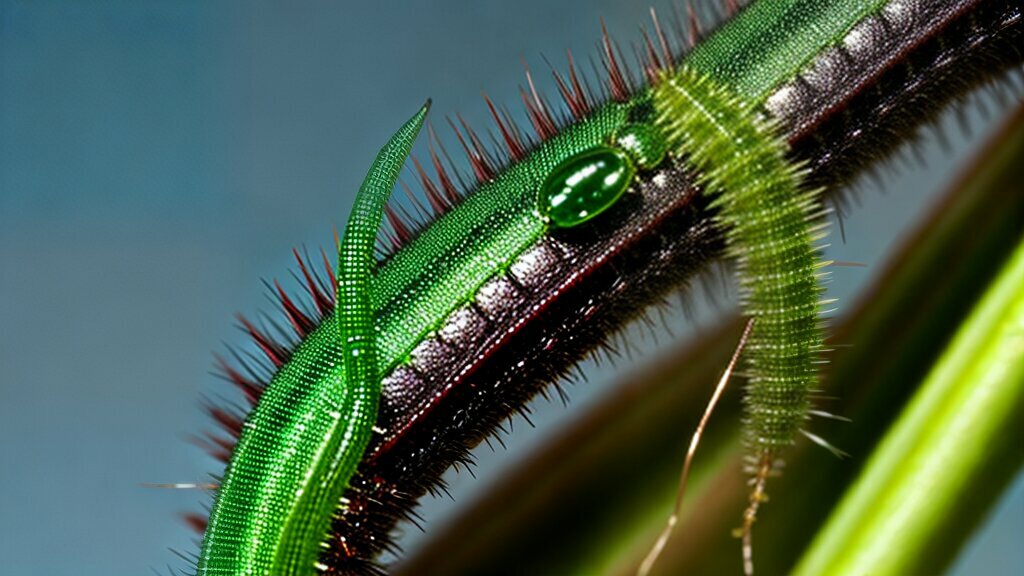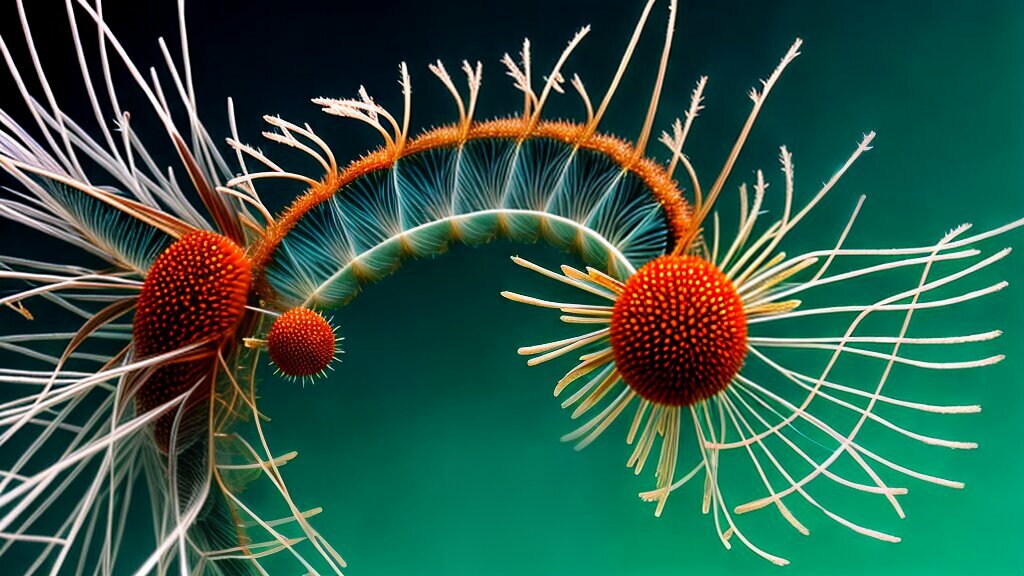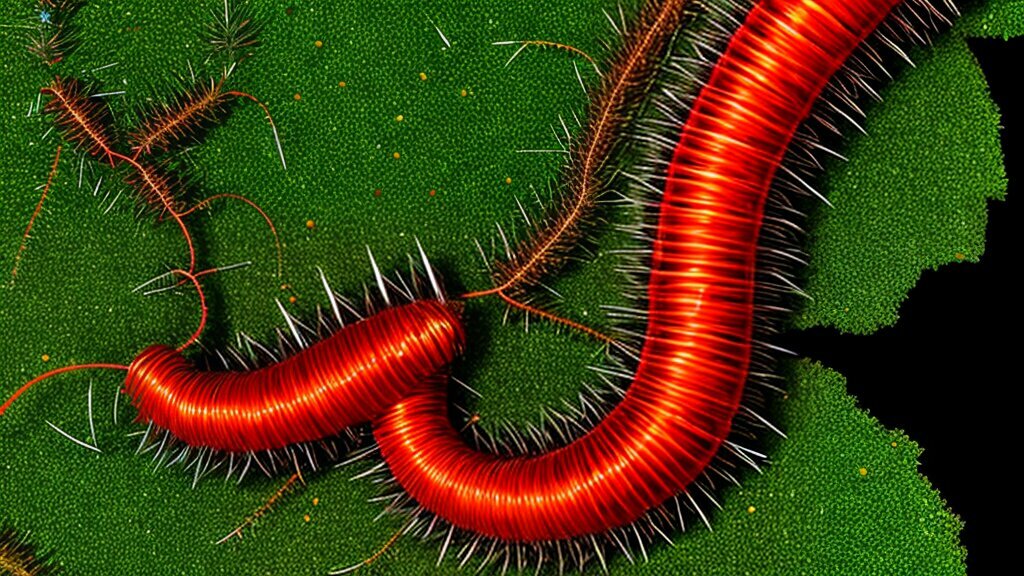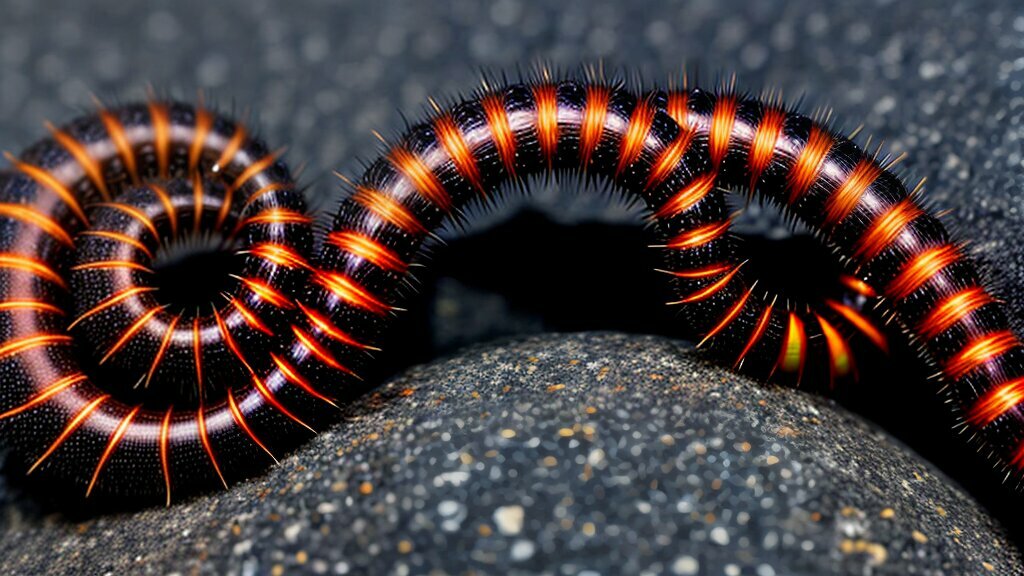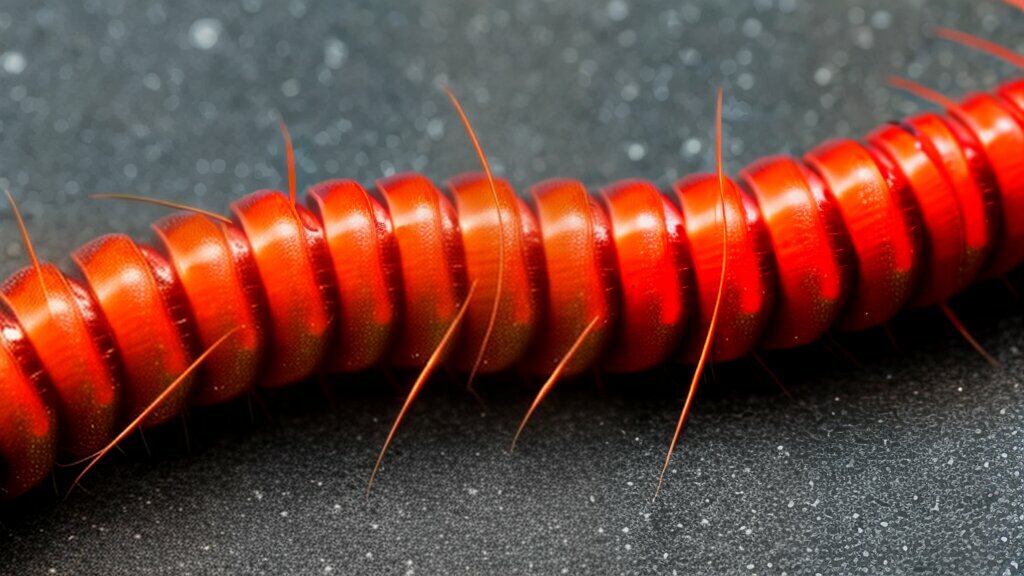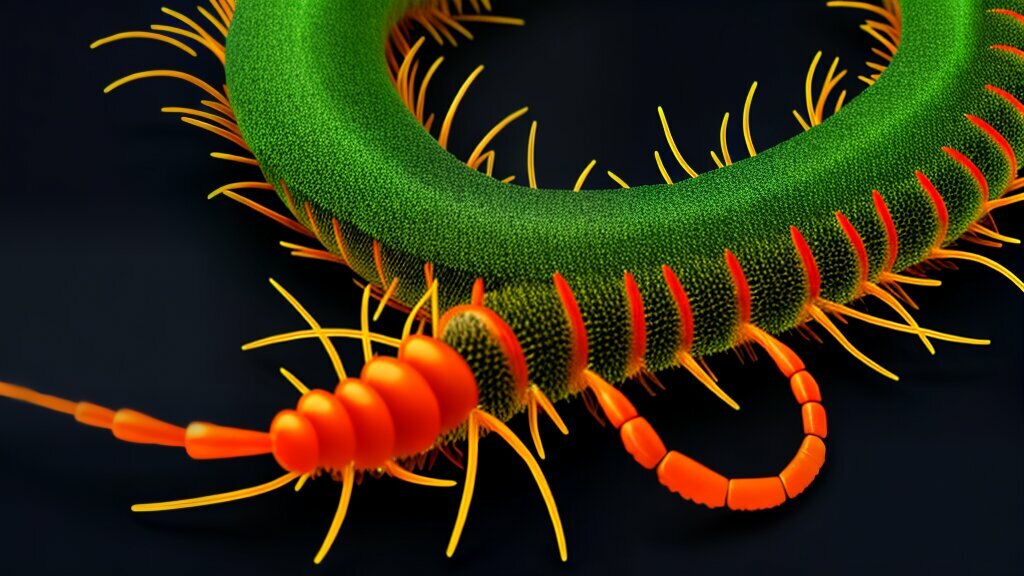Centipedes, with their numerous legs and elongated bodies, are fascinating creatures that have piqued the interest of many biologists. One aspect of their physiology that has been the subject of much study is their unique respiratory system. Unlike humans and other mammals, centipedes have a specialized structure for breathing that sets them apart from other members of the animal kingdom. In this article, we will explore the intricacies of centipede respiration and how these creatures obtain the oxygen they need to survive.
Key Takeaways:
- Centipedes have a unique respiratory system that differs from other animals.
- Their breathing mechanism involves a tracheal system and spiracles as entry points for air.
- Centipedes obtain oxygen through their environment and the process of diffusion.
Centipede Breathing Mechanism: An Overview
While human beings use their lungs to breathe, centipedes have a unique respiratory system that differs from most other animals. The primary breathing mechanism of centipedes involves the use of small tubes known as tracheae, which are distributed throughout their body.
The tracheae serve as the main conduits for air to enter the centipede’s body. They are connected to a network of smaller tubes called tracheoles, which eventually end in tiny sacs where gas exchange occurs, similar to the alveoli in human lungs.
The air is drawn in through tiny openings known as spiracles, located along the sides of the centipede’s body. As they move, the opening and closing of the spiracles helps to regulate the amount of air that enters the tracheal system.
Centipede Spiracles and Tracheae
Centipede spiracles and tracheae work together to facilitate respiration. The spiracles are openings along the sides of the centipede’s body that allow air to enter the tracheal system. Once inside, the air is transported through the network of tracheae and tracheoles to reach the respiratory sacs.
The tracheae themselves are made up of a series of tubes that run throughout the body, branching out into smaller and smaller structures. They are reinforced with a rigid exoskeleton to keep them from collapsing, but their flexibility allows them to bend and curve to adapt to the centipede’s body movements.
The Role of Diffusion in Centipede Respiration
Gas exchange in centipedes takes place through the process of diffusion, which involves the movement of gases from an area of high concentration to an area of low concentration. Oxygen diffuses from the respiratory sacs into the bloodstream, while carbon dioxide moves in the opposite direction, from the bloodstream to the sacs.
The process of diffusion is aided by the high surface area of the tracheal system, which provides ample opportunity for gases to be exchanged. Additionally, the movement of the centipede’s body helps to pump air in and out of the spiracles, facilitating gas exchange.
Overall, the unique respiratory system of centipedes allows them to thrive in a variety of different environments. Their ability to take in oxygen through their tracheal system and regulate the amount of air they breathe in and out helps them to adapt to changing conditions and maintain their physiological processes.
Do Centipedes Have Lungs?
While lungs are the primary respiratory organs in most animals, centipedes possess a unique respiratory system that sets them apart from other creatures. Centipedes do not have lungs like vertebrates do, but instead rely on a system of tubes called tracheae.
The tracheal system in centipedes is similar to the one found in insects. It consists of a series of branching tubes that carry air directly to the cells. The tubes are lined with a thin layer of cuticle that allows for the exchange of gases. The tracheal system also plays a role in regulating the water content of the centipede’s body.
The absence of lungs in centipedes can be attributed to their size and habitat. Most centipedes are small and live in damp environments where the air already contains enough moisture. Additionally, the tracheal system is more efficient than lungs in providing oxygen to the cells.
Centipede Gas Exchange: The Process
Centipedes take in oxygen through spiracles, small openings on the sides of their body. These spiracles lead to a network of tracheal tubes, which distribute the oxygen throughout the body.
Once the oxygen reaches the cells, it is used in cellular respiration to create energy. As a byproduct of this process, carbon dioxide is produced. The carbon dioxide then diffuses back through the tracheal tubes and out of the spiracles.
The gas exchange process in centipedes occurs passively through diffusion. Diffusion is the movement of molecules from an area of high concentration to an area of low concentration. In the case of centipedes, oxygen moves from the outside environment to the tracheal tubes and eventually the cells, while carbon dioxide moves in the opposite direction.
Interestingly, some species of centipedes have been found to have a higher tolerance for carbon dioxide than other animals. This allows them to survive in environments with low oxygen levels and high concentrations of carbon dioxide, such as caves or underground burrows.
The unique respiratory system of centipedes enables them to survive in a variety of environments and adapt to varying levels of oxygen and carbon dioxide. Understanding the gas exchange process in centipedes can provide insights into the respiratory systems of other arthropods and their adaptations to different environments.
Centipede Tracheal System: A Specialized Adaptation
One of the most unique features of centipede respiration is their tracheal system. Unlike most other arthropods, including insects and spiders, centipedes do not have lungs. Instead, they have a specialized network of small tubes that run throughout their bodies, called tracheae.
The tracheae connect to small holes in the centipede’s exoskeleton, known as spiracles, which allow for the exchange of gases. Oxygen enters the spiracles and travels through the tracheal system to reach the cells of the centipede’s body, while carbon dioxide is expelled in the opposite direction.
The tracheal system allows for efficient gas exchange in centipedes, as it provides a direct connection between the external environment and the cells that require oxygen. Additionally, because the tracheae are located throughout the body, centipedes are able to engage in more strenuous activities without the limitations that come with a lung-based respiratory system.
| Feature | Description |
|---|---|
| Tracheae | Small tubes that run throughout the centipede’s body |
| Spiracles | Small holes in the centipede’s exoskeleton that allow for gas exchange |
| Efficient Gas Exchange | Direct connection between the external environment and cells requiring oxygen |
The efficiency of the tracheal system is especially important for centipedes, as they require significant amounts of oxygen to support their high metabolic rates. This is due to the fact that centipedes are active predators that require large amounts of energy to hunt and capture prey.
In addition to their tracheal system, some centipedes may also possess additional respiratory adaptations. For example, certain species may have structures on their legs that aid in gas exchange, while others may possess a modified spiracle that helps to reduce water loss in dry environments.
Centipede Spiracles: The Entry Points
Centipedes have developed a specialized respiratory system that helps them breathe air efficiently. One of the key components of this system is the spiracles, which are small openings on the sides of a centipede’s body. These spiracles serve as the entry points for air, allowing oxygen to enter the body and carbon dioxide to exit.
Each spiracle is surrounded by a ring of muscle that can be opened or closed to regulate airflow. When oxygen is needed, the muscles relax and the spiracles open wider, allowing air to flow into the body. When oxygen levels are sufficient, the muscles contract and the spiracles close to conserve moisture.
The spiracles are connected to a network of tubes called tracheae that branch out to various parts of the body. These tracheae deliver oxygen directly to the cells and tissues that need it, without the need for a circulatory system.
This tracheal system is a unique adaptation that allows centipedes to breathe efficiently and survive in a variety of environments.
How Do Centipedes Get Oxygen?
In order to survive, centipedes, like all living organisms, require oxygen. However, unlike many other animals, centipedes do not possess traditional respiratory organs, such as lungs or gills. So, how do centipedes get the oxygen they need?
Centipedes have a variety of methods for obtaining oxygen. One way is through their environment. Centipedes are primarily terrestrial creatures and can absorb atmospheric oxygen through their cuticle, or outer covering, which is permeable to gases.
Another way centipedes get oxygen is through the process of diffusion. Diffusion is the movement of molecules from an area of high concentration to an area of low concentration. Oxygen is highly concentrated in the environment and can diffuse through the spiracles, which are small openings located along the sides of the centipede’s body.
Additionally, some species of centipedes have a tracheal system, which consists of a series of tubes that transport oxygen directly to the tissues. This system is similar to the one found in insects and is highly efficient at delivering oxygen.
Overall, while centipedes do not have traditional respiratory organs, they have adapted to obtain oxygen through a variety of methods, allowing them to thrive in their environments.
Centipedes’ Respiratory Organs: Beyond Spiracles
While spiracles are the primary entry points for air in centipedes, they also possess other respiratory organs and adaptations.
One such adaptation is the presence of tracheae, which are specialized tubes that transport oxygen directly to the tissues, bypassing the circulatory system. These tubes can be found branching off from the spiracles and extending throughout the body.
In addition, some species of centipedes have evolved a unique respiratory system, known as the “book lungs.” These lungs consist of a series of highly folded, thin membranes resembling the pages of a book. The folds increase the surface area for gas exchange, allowing for more efficient oxygen absorption.
Interestingly, some species of centipedes have not developed specialized respiratory organs at all and rely solely on diffusion through the skin for gas exchange.
Overall, the respiratory system of centipedes is a marvel of evolution, with a range of specialized adaptations allowing them to obtain oxygen in a variety of ways.
Conclusion
Centipedes have a unique respiratory system that sets them apart from other arthropods. Unlike insects, which rely on a network of tracheae to deliver oxygen to their tissues, centipedes have evolved a tracheal system that is highly specialized and efficient.
These arthropods breathe through spiracles, which serve as entry points for air and are connected to a network of tracheae that extend throughout their body. Oxygen enters the tracheae and diffuses directly into their tissues, where it is used for cellular respiration.
While centipedes do not possess lungs, they have developed alternative respiratory organs and adaptations that enable them to thrive in a variety of environments. For example, some species can absorb oxygen through their skin, while others have evolved respiratory structures that allow them to live in oxygen-poor environments.
FAQ
Q: How do centipedes breathe?
A: Centipedes have a unique respiratory system that allows them to obtain oxygen.
Q: What is the breathing mechanism of centipedes?
A: Centipedes have a specialized breathing mechanism that enables them to process oxygen.
Q: Do centipedes have lungs?
A: Centipedes do not have lungs as their primary respiratory organs. They rely on alternative structures for respiration.
Q: How does centipede gas exchange work?
A: Centipedes undergo a gas exchange process in which they absorb oxygen and release carbon dioxide.
Q: What is the significance of the centipede tracheal system?
A: Centipedes have a tracheal system that plays a crucial role in their respiration and is a specialized adaptation.
Q: What are centipede spiracles?
A: Centipede spiracles are the entry points for air in their respiratory system and serve a specific function.
Q: How do centipedes obtain oxygen?
A: Centipedes obtain oxygen through various means, including their environment and the process of diffusion.
Q: Do centipedes have any other respiratory organs?
A: Centipedes may possess additional respiratory organs or adaptations beyond spiracles.

